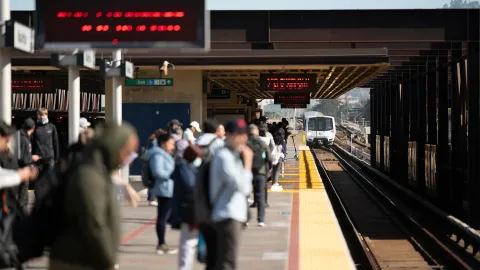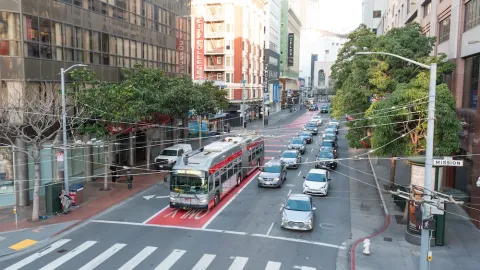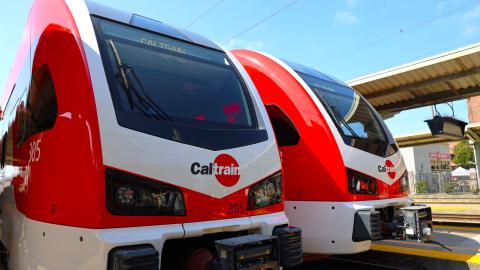
When Bay Area leaders gathered last month on a cool, crisp morning at the foot of the Golden Gate Bridge, a decades-long journey to secure funding to seismically strengthen the span came to a close with the announcement of a final pot of money to complete the project.
“This vital funding allows us to finish strengthening the bridge against disasters,” said Denis Mulligan, Golden Gate Bridge District General Manager, as House Speaker Emerita Nancy Pelosi, U.S. Department of Transportation Secretary Pete Buttigieg, San Francisco Mayor London Breed and others stood nearby in support.
The project was on the the regional Bipartisan Infrastructure Law (BIL) priority list. The Federal Highway Administration's $400 million grant will see work begin in late 2024 to strengthen the center suspension portion of the bridge. Work will finish in 2029.
It has been a long journey for the project, which began in 1998. Following the Loma Prieta quake on Oct. 17, 1989, the bridge district conducted a vulnerability study. The conclusion was the bridge would experience severe damage if the epicenter of a magnitude 7.0 or greater earthquake was near the bridge. More study concluded retrofitting the bridge would be more cost-effective than replacing it.
Work on the first phase of the seismic project, strengthening the north approach, was finished in spring 2002. There was concern that section of the span could receive severe damage in a strong earthquake.
Work on the second phase, strengthening elements of the south approach, was finished in 2007. Another phase was completed in 2014 and saw the strengthening of the north anchorage house — the box-like structure the length of a football field, which holds all the cables coming off the span that tie down the structure.
Now bridge officials have the money to complete the last phase addressing the center suspension portion of the span. With the earlier phases of the retrofit complete, the bridge can safely withstand an earthquake over 7.0 in magnitude, but it may experience damage that requires closure after a major seismic event. Completion of the final phase of the retrofit will further harden the bridge against damage from an earthquake or other disasters.
"For more than eight decades, the Golden Gate Bridge has stood as a symbol of the innovative spirit of the Bay Area and our nation," Pelosi said. "The Federal Highway Administration's $400 million investment will help ensure that this iconic landmark continues to safely and reliably serve our region for many years to come.”



Submit your comment
In order to receive a reply to your comment, please provide an email address.